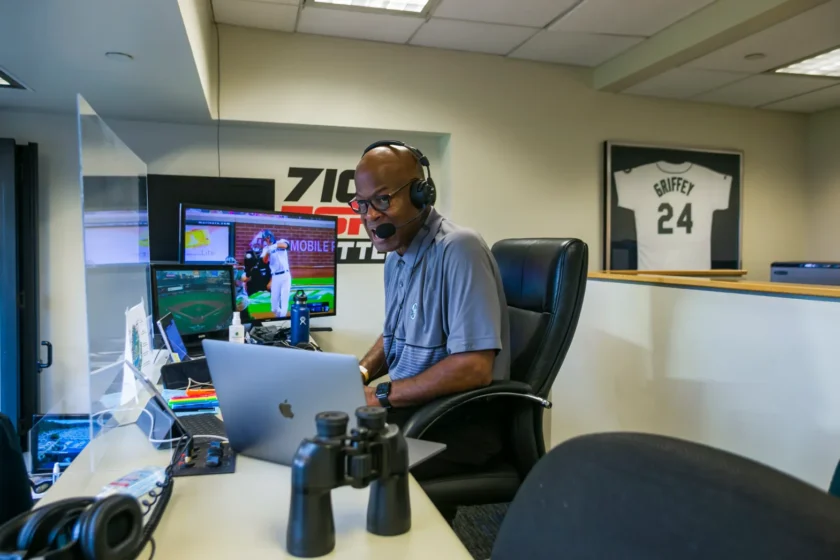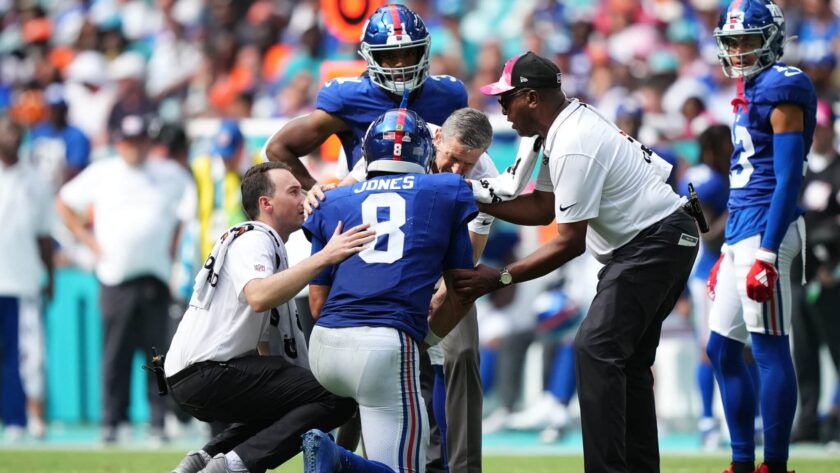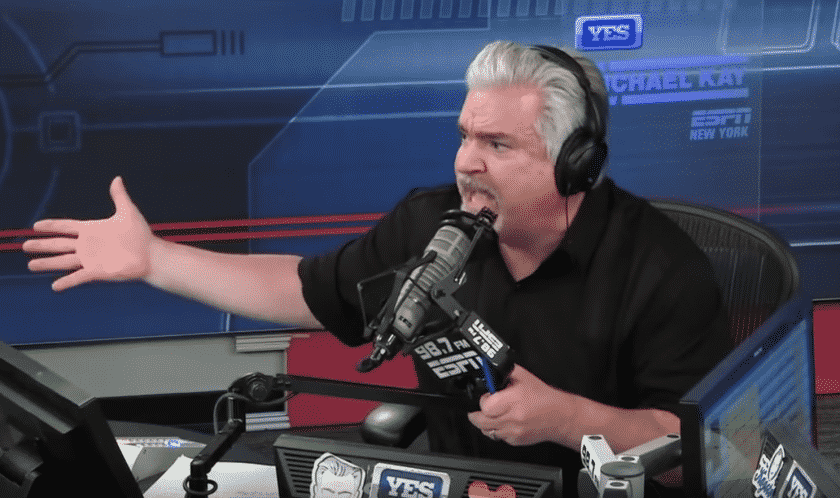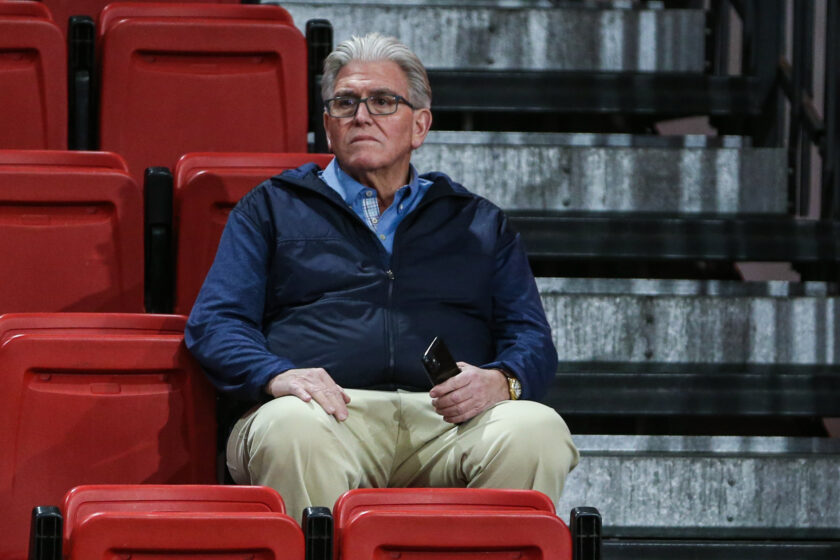Sports talk radio: The evolution of how we analyze sports
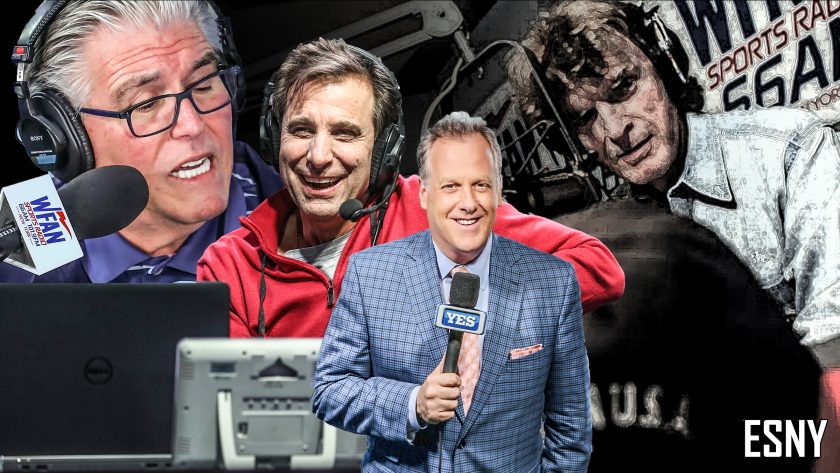
With the recent passing of Don Imus and the semi-retirement of Mike Francesa, sports talk radio is in the midst of a transition phase.
[sc name=”Rich Coutinho Banner” ]As we head into a new decade, it is interesting how sports talk radio evolves. How did this form of media become so powerful?
Well, here is an excerpt from my book, Press Box Revolution, on how this happened. I talk about WFAN and it’s really appropriate to involve both Mike Francesa and Don Imus. The radio legends’ influence greatly impacted this evolution.
With the passing of Imus, it’s important to remember his crucial role over the last several decades.
It is impossible to overstate the impact the advent of sports talk radio has had on the media landscape over the past thirty years. Social media and the Internet have also been played a large role but sports talk radio has been responsible for providing the impetus that has shaped our changing sports world.
I remember distinctly where I was when I heard about WFAN taking over the signal of country music station WHN (1050 AM). I was eating lunch with some of my Sports Phone colleagues and we were ecstatic because we thought it would be the perfect place to take the next step in our careers.
But all of our hopes were dashed rather quickly when we found out that WFAN’s parent company, Emmis Communications, would not hire any current Sports Phone employees. Officially, we were told all positions were filled but we knew better as we heard rumblings from the inside that station management felt our company was a direct competitor. I had a couple of problems with this. First, we were not nearly as direct a competitor as a radio station was—we were a phone service. Also, why wouldn’t they want to hire competitors? It made no sense.
By doing this, they passed over talented broadcasters such as Bob Papa which is ironic when you consider he now does the play-by-play for Giants football games for the station. In fairness to the current management team, I firmly believe had they been in charge at the time, both Mark Chernoff and Eric Spitz would have handled it differently. Their predecessors hired mostly out of towners and the problem with that was they lacked a feel for the pulse of the New York sports fan.
Jim Lampley and Greg Gumbel are fine broadcasters but New Yorkers did not gravitate to them and Pete Franklin, the afternoon show host from Cleveland, didn’t really understand the give and take with the New York sports fan. They were flying in talent on a weekly basis, spending tons of money and not getting much in the way of ratings or revenue. The weak 1050 signal was an issue as well and the first eighteen months of the station’s existence was tough and many experts felt they would not survive.
There were some positives, however. Mike Francesa, Ed Coleman, and Howie Rose were a trio of solid pros that would help shape the future of WFAN. In addition, Emmis inherited the right to broadcast Mets games from purchasing the 1050 real estate and that gave them live sports every night during the summer.
Looking back, a number of things went wrong from the start. Franklin was just the wrong guy at the wrong time. He signed a two-year pact worth $600,000 which in those days was a pretty steep price tag for a radio host, even in New York. He was gruff with the callers and never quite understood that New York, unlike Cleveland, has multiple teams in every sport, and you should at least try to give fair and balanced reporting. He used sound effects but only to demean callers and his act wore thin very quickly.
Jim Lampley and Greg Gumbel were far too stiff to appeal to the listeners and quite frankly, advertisers were not flocking to WFAN aside from the clients they had on Mets broadcasts.
But that big trio of pros I mentioned earlier helped keep the ship afloat.
Howie Rose was a big contributor in those early years as Mets broadcasts were making money for the station (one of the few things that did) and Rose hosted Mets Extra, a pre- and postgame show that was far ahead of its time. The show originally debuted on WHN during the 1986 postseason with Dave Cohen and Rusty Staub co-hosting but Rose took over on WHN at the start of the 1987 season. Once Emmis bought the station, Rose gave WFAN listeners an inside look at the team and played psychiatrist with unhappy fans after a tough loss.
The show was produced on-site at Shea Stadium after home games but was done at WFAN studios which at the time were in Astoria, New York when the Mets were on the road. Kenny Albert, son of the great sportscaster Marv Albert, served as the primary associate producer, one of his first jobs in the business. Of course, Rangers fans came to know Kenny as the radio voice of the team, as his dad had been years earlier. He would go on to a great career, becoming a national voice as well with FOX Sports.
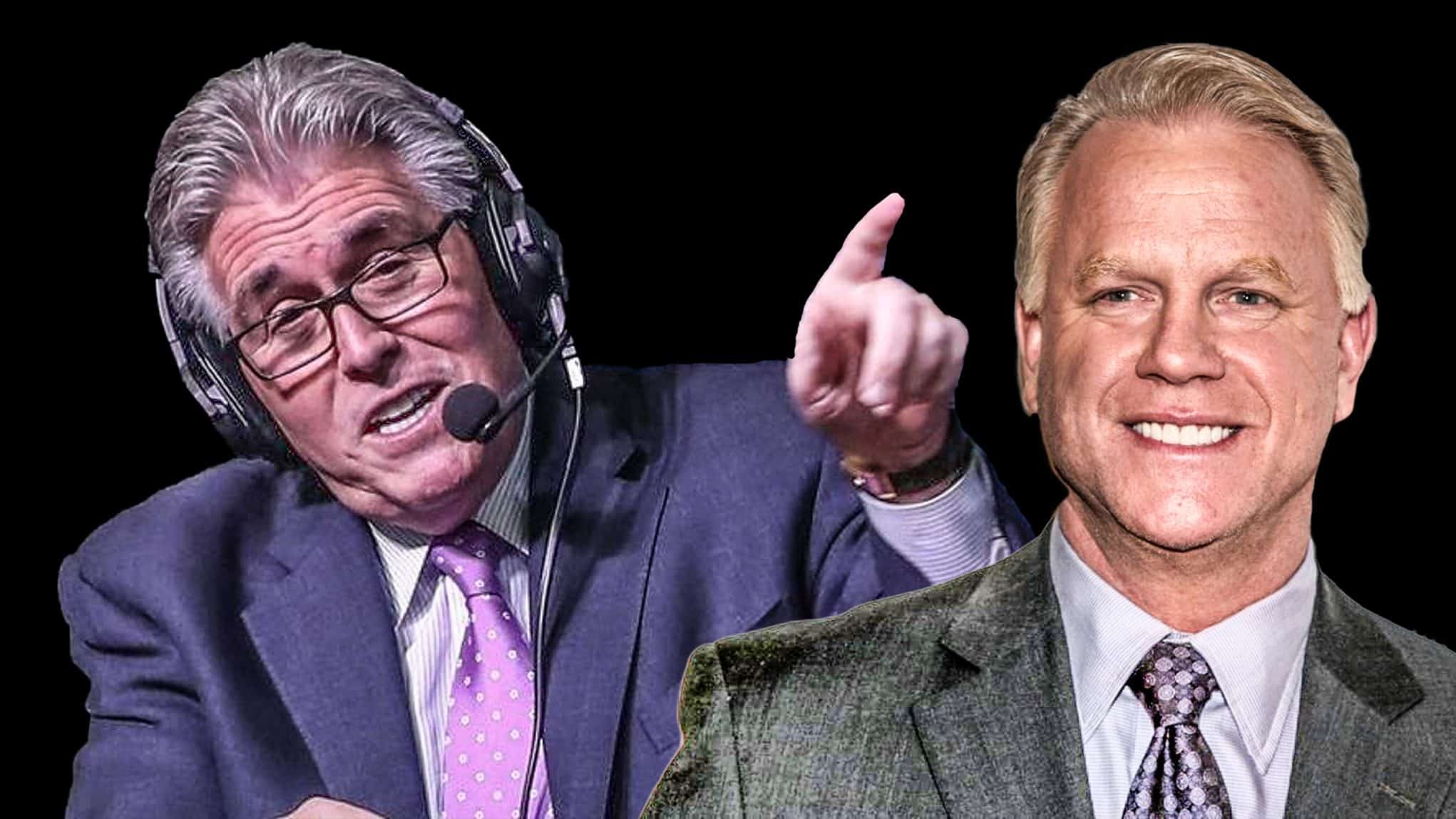
Ed Coleman is perhaps the most versatile sportscaster I have ever been around. Eddie can do an update, a sports talk show, a pre- or postgame show coupled with a solid ability to do play-by-play. Successful companies in any business always have unsung heroes that allow management to better utilize their entire staff and Coleman has always done that for WFAN. The only other talent I have been around that carries this level of versatility is Don LaGreca who in many ways does for ESPN New York what Ed does for WFAN.
Mike Francesa originally turned down a producer spot on the station but his persistence paid off as he was given a weekend show that featured college football and basketball analysis. Francesa had spent many years as a researcher and his command of the college scene was second to none.
Despite this talented trio, the station floundered for a year and a half until they received the gift that vaulted them into success. General Electric, who at the time owned NBC, sold their New York station, WNBC 660AM to Emmis, who moved WFAN down the dial. The move, which occurred on October 7, 1988, improved the station’s signal. That night, the scheduled National League Championship Series game between the Dodgers and Mets was rained out but listeners got to hear the difference in how WFAN sounded on their new powerful 50,000-watt signal.
I remember driving to Shea Stadium to cover the game that night and was blown away by the difference in the sound on my car radio. The deal with NBC also brought Don Imus to the station and this saved the day. The morning show WFAN had been airing was hosted by Greg Gumbel and I knew this change was just what the station needed as I was an intern when Don Imus shared the spotlight at WNBC with Howard Stern.
This was a huge coup for WFAN and I have to laugh when I hear people say WFAN proved all-sports radio works. In all honesty, had Imus not arrived in 1988 I am not sure we’d be talking about how successful WFAN became because he bridged the sports fanatic with the casual sports fan in a way that no other person was capable of doing.
The greatest illustration of this was Imus utilizing Mike Breen for early morning sportscasts. I went to Fordham with Breen and always knew his sense of humor coupled with his sports knowledge always provided a great listen. Breen did an incredible job, showing he knew how to capture an audience even if Imus constantly interrupted his reports. In fact, so many talk show hosts try to do that now but nobody has ever done it as well as the combination of Breen and Imus.
There were other changes on the horizon as WFAN began branding their updates as 20-20 sports flashes. I could often be heard giving live reports from events as a freelancer on those updates. I freelanced for a bunch of stations, including WFAN, and that is where I first met Chris Russo. We sat together in the press box one night and talked sports for the entire game. He was doing a sports show a WMCA at the time and invited me on quite a few times to provide updates during his show while I was covering the Mets.
You could tell right off the bat that he was a real go-getter. His on-air style was different and many of my colleagues thought his voice was very irritating, but I enjoyed listening to him from the beginning.
Something which impressed me right away was his impressive knowledge of sports history. He could recall even the most minor detail which would connect a point he was trying to make on the air. Years later, he still does it as well as anybody.
In the meantime, Don Imus and afternoon show host Pete Franklin began taking shots at each other which made for great radio. You could see Don was just having fun but Pete was getting heated in his discussions, referring to him as “Minus” while the morning show host called Franklin a dinosaur among other things. I think it soured Franklin on WFAN and both sides had enough of each other so they parted ways in August of 1989.
This was important because Russo had since joined the station as a part-timer while Mike Francesa parlayed his WFAN weekend gig into a daily show with Ed Coleman. The station was searching for an afternoon sports show duo, and I am sure Don Imus was heavily involved in the decision to pair Chris Russo with Mike Francesa. By this time, the nickname “Mad Dog” starting to grow with the help of columnist Bob Raissman who coined the phrase and Don Imus who drove it into the heads of WFAN listeners.
On Sept. 5, 1989, the duo was paired on an afternoon talk show that would be like no other. Here were two guys that would change the way we talk about sports and the show started at a time when the New York Mets had become a team you could find on both the front page and the back page.
The Mets were in the news constantly in those days, good and bad. There were court cases, police incidents, off the field fights, and Mike and The Mad Dog took listeners through it every step of the way while pulling no punches.
They also put some radio stereotypes to bed. Neither had the classic radio sound but their success made that less important. They also refused to parrot the popular take and were not afraid to take guests to the mat when interviewing them. To this day, they both remain the best interviewers in our business by asking the questions we all wanted to be answered.
Another stereotype that they put in the grave was you couldn’t be both a fan and a talk show host. This is one that is a pet peeve of mine because any talk show host that tells you they are not a fan of a team or a player is either lying or they don’t have the passion to do that job. The people that call into these shows are fans because they listen to hours of sports talk per day and they don’t want to hear “politically correct” drivel—they want passion and point of view. If you are totally objective, passion tends to get lost and they understood that better than anyone.
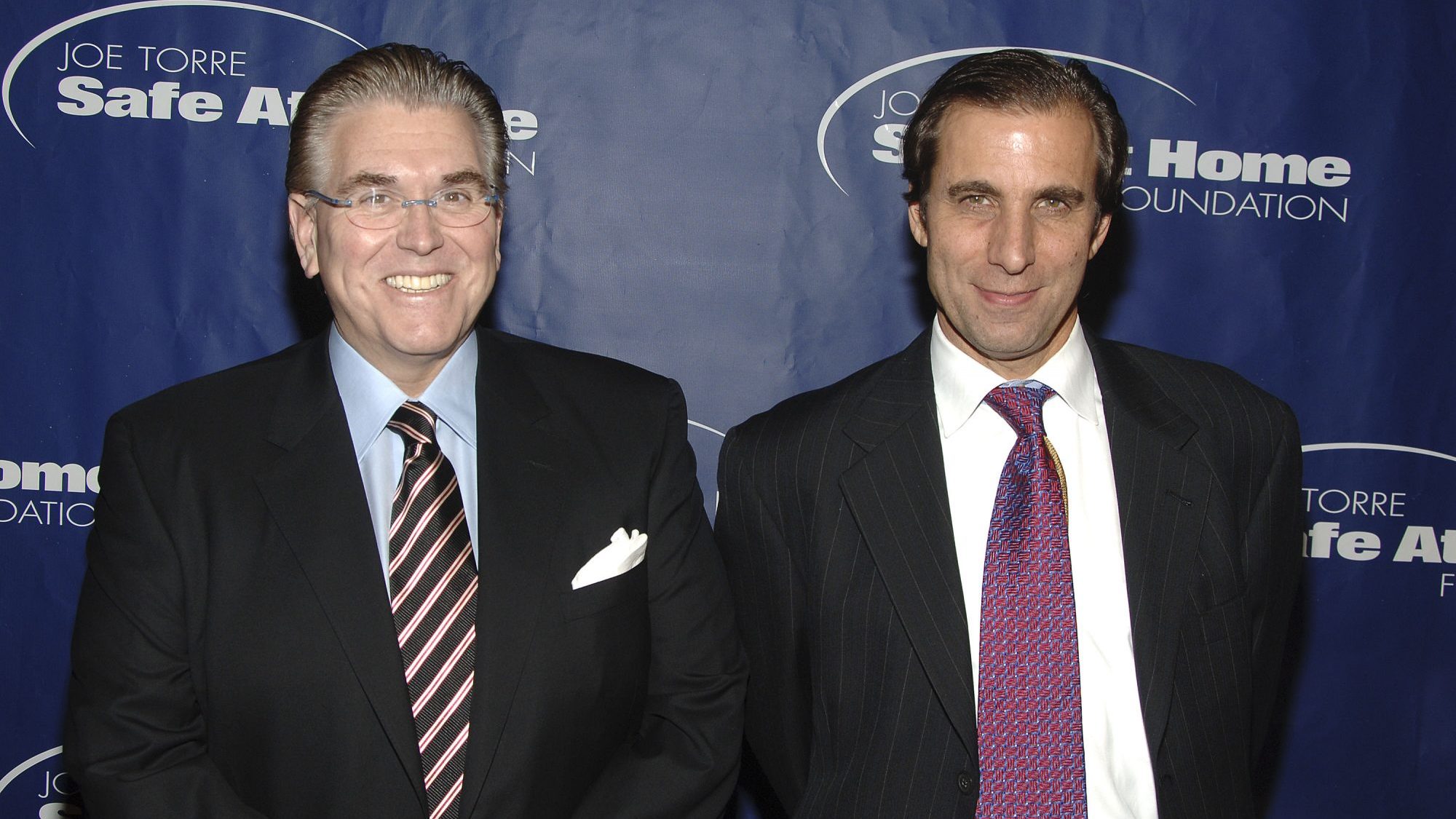
The combination of Imus in the Morning and Mike And The Mad Dog were the main reason that WFAN was the highest billing station in the country during the decade of the 1990s. From a reporter’s standpoint, you could not be in the press box without hearing the media talking about what they said on their shows.
I worked at WFAN as a reporter and production assistant during the 1990s when they were going through some tumultuous times. There were long stretches when they did not speak to each other for days off the air but still performed compelling shows. Honestly, I did not have too much direct interaction with Francesa since my shifts were usually at night but he was always pleasant to me even though I saw him big-time others. Honestly, I kind of understood it.
When Mike first landed the gig, there were actually people who said that he lucked out and did not pay his dues. Nothing could be further from the truth. He was at CBS during the heyday of The NFL Today and was instrumental in the production of that classic NFL pregame show. Brent Musburger, Jimmy The Greek, Irv Cross, and Phyllis George relied on Francesa, whose research was complete, accurate, and he always found something the viewers did not know.
He and moved up the ranks at WFAN and deserved everything he was given. He took the opportunity and ran with it. If there ever was a star that paid his dues, it would be Mike Francesa.
Russo, unlike Francesa, never big-timed anyone but sometimes I wish that he would have because the media was so phony to him. I knew him before he got to WFAN and he always had time for me.
He was exactly the same off the air as he was on the air. There is not a phony bone in Chris Russo’s body.
Of course, he’s struck it rich but in many ways, he’s still the same guy he was at WMCA. Sports is in his soul and he will have a debate with you all night and then go out for a beer to give you advice on your career. Mike and Chris are two very different personalities but together they were picture perfect and if they ever reunite they are the best duo that has ever been put together in the history of sports talk radio.
Mike and Chris had their show simulcast on the YES Network starting in 2002, allowing them to reach a wider audience around the country which further enhanced Mike’s weekly football show which could be heard around the country on every NFL Sunday.
I often hear veteran writers telling me they are no longer sports fans and invariably, they are the ones who tell me they also hate their jobs. I do not think that’s a coincidence. Baseball will always be in my soul because when I pull up to the park, I’m a little kid again. That’s the same reaction Chris Russo gives when he opens his show by yelling into the microphone.
There are people that contend you MUST be objective always and I think that’s true if you are a news reporter but sports is a recreational tool people use to forget their problems and part of that is being a fan. And Mike and the Mad Dog brought that into the mainstream when most others were afraid to admit their fandom. Some are still very afraid of it.
Another WFAN show host that is never afraid to show his fandom and has become one of the biggest stars there is Joe Benigno. His first taste of radio came about in 1994 when he guest-hosted a show after winning a contest held by WFAN management. His skills were raw but his passion for sports was obvious as he brought his heart to every broadcast after he was given the overnight shift on WFAN in 1995.
I became close friends with Joe because we both worked weird hours and he wore his heart on his sleeve as the teams he rooted for are the Mets, Knicks, Rangers and Jets. But the Jets were his most special team and he openly rooted for them on the air while at the same time being their harshest critic. To this day, I say Joe’s best shows came after Jets’ losses because his panic and grief came right to the surface. He was never afraid to show it and bonded with his fellow Jet fans on an overnight show which was actually therapeutic for the fan base after a brutal day watching their team.
I remember working the last Sunday of the NFL regular season in 1997 when a Jets win would have put them in the playoffs in Bill Parcells’s first season as the Jets’ head coach. It was a tightly contested game with the Jets trailing 13–10 late against the Lions in Detroit. Parcells was not a big fan of quarterback Neil O’Donnell and many felt it affected his fourth-quarter game calling as a failed halfback option from Leon Johnson and an interception from second-string quarterback Ray Lucas ended the Jets’ playoff hopes.
I will never forget Joe entering the studio that night reeling from the game and cursing up a storm in the newsroom regarding Parcells. He felt his hatred for O’Donnell clouded his judgment and he pinned this loss at the feet of the head coach. I did not disagree with him but I knew someone at the station that would—Mike Francesa, who was very close friends with Parcells.
Joe was getting more and testier as he prepared for his overnight show and I tried to calm him down, but he was ranting and raving like a caged prisoner. I actually began to get him more upset by sharing in his angst. When he hit the air, he let loose on Parcells and simply would not stop.
At this point, the phone rang and an intern answered it. It was Francesa, and he and Joe went at it over the phone. It filtered onto Joe’s show as Mike demanded air time and a fierce debate ensued that got personal. To his credit, Joe stayed on-topic, but their debate went on for close to 45 minutes. Poor Sam Ryan, who was doing updates, lost air time not knowing when she would go on as Francesa made it seem like he was executing a Senate filibuster about the issue.
This was great radio by two impassioned people who were not afraid to show their fandom for a team or an individual and it had the attention of every sports fan listening in New York. That is the very definition of sports talk radio.
The one show that seemed to be a revolving door for The Fan was middays. After Francesa left for his show with Mad Dog, the station tried a number of different combinations. Ed Coleman and Dave Sims had a very entertaining show through the mid-’90s but the station hoped that Len Berman and Mike Lupica could co-host that slot. I had issues with that idea from the start as neither was a radio guy and there is a dynamic to a radio show that is sometimes difficult for writers or TV broadcasters to grasp.
Before it even began, Berman had second thoughts but WFAN would not let him out of his contract so they each did a separate two-hour show beginning at 10 a.m. ET. That did not last long, and then Russ Salzberg was teamed with overnight host Steve Somers (which made Benigno’s overnight show possible) which was coined “The Sweater And The Schmoozer.” Russ was known for wearing all different kinds of sweaters while Somers just loved talking to people.
Somers began his career in the early ’70s and came to WFAN at its launch in 1987. manning the overnight shift until this opportunity presented itself. He really began to popularize his brand on this show using humor to talk about sports. But people fail to realize Somers was also a great resource for reporters as he personally helped me by giving us airtime on his show to help perfect our skills.
In 1999, the midday ratings were tanking so WFAN decided to fire Salzberg and Somers but after fans starting complaining they re-hired Somers and gave him a prime-time show that would be pre-empted on most nights by a game as the station was carrying a Mets, Jets, Knicks, and Rangers broadcasts by this time.
The next midday show was handled by Suzyn Waldman, who did a great job of covering both the Yankees and Knicks for the station, and Jody McDonald, who, like Suzyn, was an original WFAN member that hosted weekend overnights in the very beginning. This was a great partnership as Waldman knew so much about what was going on in the team clubhouses while Jody was one of the first pros that actually acknowledged the popularity of fantasy sports. He also understood the passion fans had for wrestling as Rich Mancuso often appeared on his shows to talk about the WWF (before they changed to WWE).
In 2001, Waldman left the station to join the YES Network and was replaced by Sid Rosenberg, whose offbeat personality sometimes overshadowed his outstanding sports knowledge. Sid and Jody McDonald tried hard to boost ratings, but to no avail. McDonald was let go and Joe Benigno was moved into the slot, leaving the overnight show a revolving door to this day.
Joe and Sid were able to mesh well and they captured the fan’s need for sports talk around lunchtime. But Sid had a bunch of demons that he has bravely fought off in the past few years. At that time, he was very talented but reckless with his on-air responsibilities resulting in his being removed from the show, forcing Joe to fly solo for over a year until the station found the answer to their prayers in Evan Roberts.
With the exception of the Francesa/Coleman duo in the early years of WFAN, Roberts and Benigno are the best duo in this time slot I’ve ever heard. They are years apart in terms of age but are a shining illustration that sports bridges those gaps. They appeal to a plethora of demographic groups because they never scold listeners—they listen and will debate them but always treat all of them with a respect level rarely seen.
As WFAN continued its growth in both ratings and revenue, sports stations started cropping up all over the country but they flew solo in New York for a long time. There were some brief competitors such as Sporting News Radio, which existed in some form on 620 AM in New York from 2001 through 2011. Aside from Scott Wetzel and Bruce Jacobs, who formed a great morning show that actually brought in some listeners, most of the programming never caught the ear of the New York sports fan. Sporting News Radio was formerly One on One Sports but neither organization effectively cut into the listenership of WFAN in any meaningful way and is now called SB Nation Radio.
I spent most of my time in the early ’90s working at ABC Radio and lived through a transition of that organization as most of the network’s sports resources were being directed towards ESPN Radio, which launched on Jan. 1, 1992 at Sports Radio ESPN.
By then, ESPN had become such a big part of the sports fan experience especially once their SportsCenter program began to change the way fans looked at sports. The sports anchor had always been defined as a person who gave the scores and big news of the day but rarely inflected their own personality in those reports. The one exception to that was Warner Wolf who delivered a nightly sports report complete with highlights.
Warner gave us a look at the future with his catchphrase “Let’s go to the videotape.” He clearly understood that his personality was important in developing a brand. This is a concept that ESPN employs to this day as SportsCenter is more than a highlight show—it is a place where segments like The Top 10 highlights of the day and Web Gems were born.
Anchors like Keith Olbermann, Stuart Scott, Rich Eisen and Kenny Mayne each had a distinct personality. To me, the greatest of these stars was the late Stuart Scott, who brought hip-hop culture into his delivery. His catchphrases became legendary, and my favorite was “Just call him butter ‘cause he’s on a roll,” which described a player on a hot streak.
The combination of the migration of the nightly sports report courtesy of SportsCenter coupled with the evolution of sports talk radio brought about the genesis of ESPN Radio. The channel’s signature show for many years was Mike and Mike. They spent more than seventeen years together in the morning and proved that not every sports morning show needs to be a shouting match. They have their fierce debates but really began to perfect the biggest revenue grabber in the business—embedded messaging in the program for advertisers and many have tried to copy that concept but few have done it as well.
Sports Radio ESPN only aired on weekends at the start. It provided updated scores and talk shows but did not take calls from listeners, which I think was a huge mistake. Those weekend shows pulled in good ratings during football season, but I learned a valuable lesson seeing the birth of this network up close.
You can accumulate as many affiliates as you want but if you do not have real estate in New York, Chicago, and Los Angeles, your revenue model falls apart. ESPN attempted to get around that by clearing programming in New York as WFAN ran some ESPN programming especially after they gained NBA broadcasting rights in 1995 and MLB rights in 1997. They cleared many of those games for ESPN here locally but the worldwide leader needed clearance in New York for other programming after they expanded to a 24-hour, seven-day-a-week format in 1996.
This became a pressing issue for them even though some of their radio shows began to be simulcast on ESPN2, ad sales dollars began to level off, and the revenue model was shaky at best. In 2002, they made the move they needed to make—entering into an agreement with New York station WEVD which was ironically located in the same position on the dial where WFAN first entered our lives.
The first all-sports day on 1050 was Sept. 2, 2001, just nine days before the 9-11 attacks. The station began running the ESPN national feed and was hoping to filter in local programming to give WFAN a run for their money. But even to this day, the impact on WFAN has been pretty negligible and I am telling you that as someone who still does work for them.
They never quite understood that to do sports talk in this market is impossible if you are not going to dive into the pool. There have been times where the local angle was played up but they never kept it on a consistent basis. In fairness to management there, Bristol, not New York, runs the show there.
Still, they have always reached out to me to help with their coverage of the Mets. In 2006, they asked me to cover the postseason for them and followed it up by asking me to be a beat reporter in the same way Ed Coleman covered the Mets for WFAN. The problem was they had no money to send me on the road so I brokered a trade deal with an advertiser that paid for all the travel. I broke some stories and appeared nightly on a show called New York Baseball Tonight which previewed the night of baseball from both the Yankees and Mets perspectives.
Andrew Marchand and Larry Hardesty covered the Yankees while I covered the Mets. The show was a great alternative to the Mets pregame show on WFAN. It featured a one-on-one interview with both a Yankee and Met player plus pregame sound. In fact, we aired the Met and Yankee manager pregame sessions way before anybody aired it as we played excerpts on The Michael Kay Show.
The station faced many obstacles but the backroom production team was not one of them. I worked together with pros like Ryan Hurley and Andrew Gundling whose main goal was to get content on the air and they did it so well. Both of those producers would be on a shortlist of people I would give the keys to if I ever owned a radio station.
New York Baseball Tonight was the brainchild of Pete Silverman, who had spent years at MSG and to this day remains someone that gave me so much in terms of coaching.
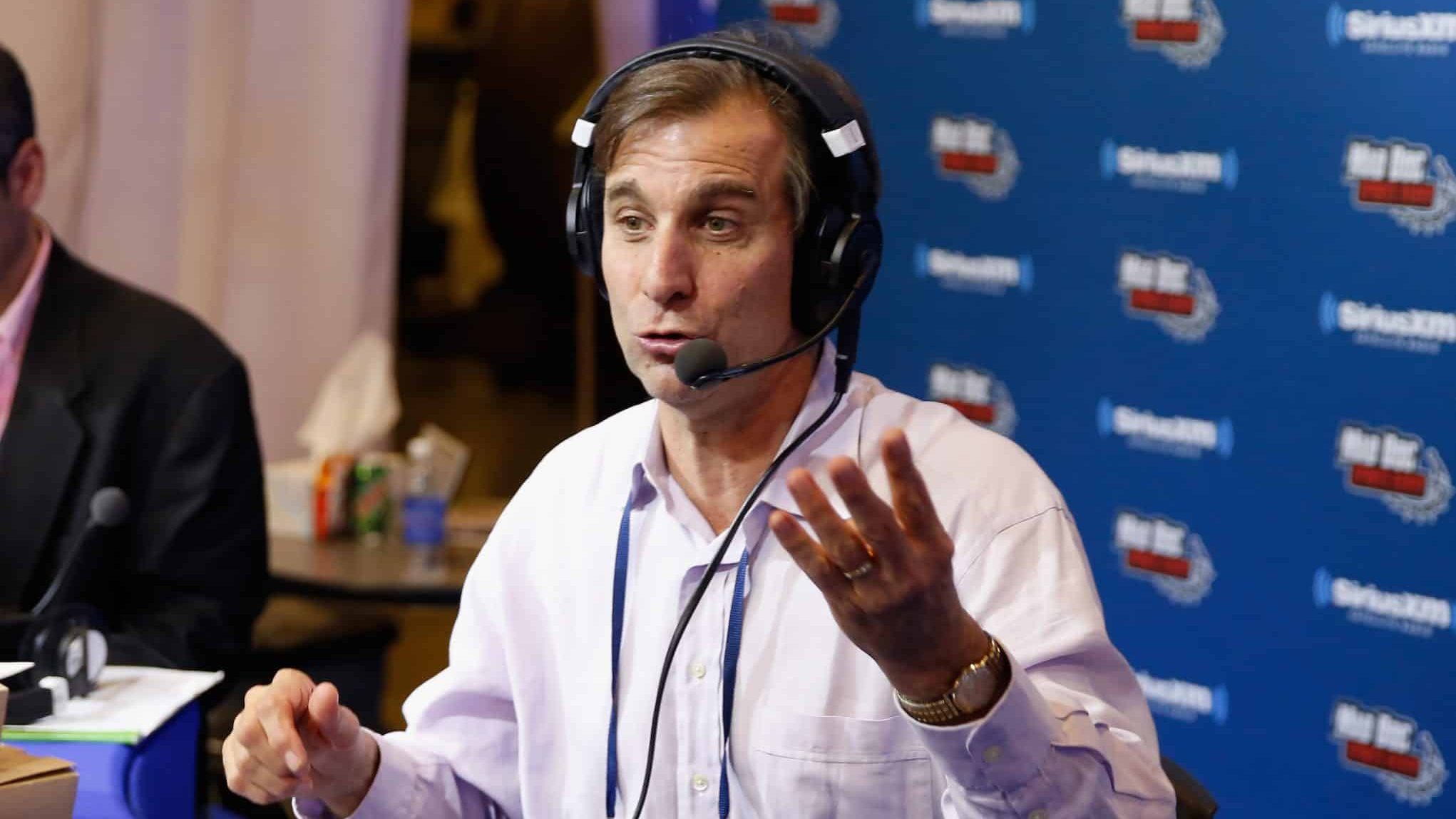
ESPN Radio had the chance to put a crack into the WFAN ratings in 2008 when Chris Russo left WFAN to join SiriusXM. The two satellite companies brokered a merger earlier in the year and they offered Chris Russo his own channel known as Mad Dog Radio. Many suggested it happened because of a falling out between him and Francesa. I do think there were some times they fought about issues but this move was about money and not much else.
They did their last show together on Aug. 8, 2008, from the Giants’ training facility in Albany. Six days later, WFAN and Russo officially decided to part ways, leaving Mike Francesa alone to keep the program alive.
The previous year Don Imus was forced to leave the station after he referred to the Rutgers women’s basketball team in a derogatory manner both sexually and racially. It was an issue that forced WFAN to fire him after they thought a two-week suspension would be a just punishment. CBS, who picked up ownership of WFAN in 1997, felt the public outcry was too much and so they severed ties with Imus.
In a mere sixteen months, the two biggest revenue sources of WFAN had left the station. It could have signaled a changing of the guard in the New York sports radio market.
Many 1050 ESPN executives pontificated that this was the opening they were waiting for but their actions illustrated that nothing was going to change much in the near future. I never quite understood why ESPN did not take the ball and run with especially with the fact that an ESPN New York website was on the horizon. The simple fact was they were not equipped to handle the conversion.
A managerial switch brought Dave Roberts to the station in 2009 and many of the moves that would provide a local flavor to the station went out the window. I got the sense that Dave was a nice guy but did not understand the flavor of New York radio. And across town, WFAN had two absolute pros at it in Mark Chernoff and Eric Spitz. Quite frankly, Roberts was no match for them.
Boomer Esiason, former Jets quarterback and Craig Carton had taken over Imus’s slot and immediately provided listeners with a sports show that considered no topics taboo. It was almost as if these two had been together forever and Carton knew how to play an audience. Boomer Esiason is a brilliant host whose command of the business goes far beyond the sport of football. He is a true sports expert in every way and Carton is an indispensable part of WFAN because he connects directly to the fans and provides one of two emotions-you either want to hug him or strangle him. Jerry Recco’s interaction with Boomer and Carton is the closest thing I’ve ever seen to the Mike Breen/Don Imus connection.
In my opinion, Imus was the best morning host I ever heard on a sports station and although I’d put Boomer and Carton behind Imus, I’d have to place every other morning show well behind this duo.
At the same time, they explored giving Mike Francesa a co-host but he demonstrated he could do a great job as a solo act. I firmly believe the split up benefited both Francesa and Russo. They have both proved they can breed success in any setting. WFAN was able to survive the losses of Imus and Russo that most thought would bring them back to the pack.
That’s not to say 1050 ESPN lacked for talent. The Michael Kay Show is a superbly produced property and both Michael Kay and Don La Greca form a duo that would beat 99 of 100 sports shows in the world. They bring a real personal touch to what they talk about and have a great way of interviewing guests as well as allowing fans to speak their mind in a respectful and open forum.
They have never had a lead-in show that brought in anywhere near the listeners that Joe & Evan pull in for the FAN. They also do not have local baseball broadcasting rights for either of the New York teams which would provide inventory that could command high revenue. Getting a YES simulcast was a great start but they need to get the sales team to sell every inch of real estate on their shows. Kay and LaGreca’s names on embedded in-show messaging carry a lot of weight and sales management needs to demand their account executives understand that. These two are the face of the franchise.
In many ways, The Michael Kay Show is on an island there and I firmly believe nobody could do more with the limited resources they possess than they do. I have appeared on that show a number of times and from my experience, I can tell that Kay and LaGreca are both true professionals in every way.

With Francesa leaving WFAN at the end of this year, I sincerely hope ESPN will put the money and resources into this show by providing better lead-ins and the capital to get them where they belong—No. 1 in their time slot. Kay and LaGreca are capable, but management needs to step up and support them so they can reach the heights we all know they are capable of achieving.
Aside from the local sports stations, satellite radio has blossomed in the last decade to be a major player in the sports media marketplace. There was a time when some felt satellite radio would never catch on. Two things pushed it along—a loan from Liberty Media and increased penetration into the automobile satellite installation business.
If you want to pinpoint one thing that saved the day, it was Howard Stern and every person working there today owes him a debt of gratitude. He could generate money if he uttered three words and then left for the day because the three words would spike subscribers. I briefly ran into him when I interned at NBC years ago and he was entertaining then but is ten times entertaining now. When I worked at News 12 in Westchester, I served as a production assistant on one of his pay per view shows and it an indescribable experience. He was super nice to all of us and in many ways should serve as an example for people that don’t know how to make their brand profitable.
I worked at SiriusXM in a sales and programming senior management position while I was between ESPN gigs and I must say there were issues right off the bat. The merger was still in its infancy stage but instead of consolidating things they treated it like Noah’s Ark—they had two of everything. Two sales software systems, two automation systems, two control room facilities, two totally different master control processes, and an ad sales team that had trouble making the grade.
I tried to persuade them to use Wide Orbit, a sales software system that was quickly becoming state of the art in the industry. I begged them to use it but they resisted. They finally installed it five years after I urged them to do it. Sales-wise, they sold out Howard Stern, but little else. I never quite understood how the NFL Channel, Mad Dog Radio, and even the Martha Stewart Channel were undersold. These channels should have sold themselves—they had Stern and could then force customers to buy other channels if they wanted Stern but somehow that never happened.
They also had a large number of live sports and very rarely sold it—events such as the World Cup, World Series, Super Bowl, and the NBA Finals were grossly undersold not to mention college bowls and even the NCAA Basketball Tournament. I would never blame the salespeople because they were not given the proper direction. I also found it astounding that inventory sell-out levels was never used to spike pricing. The sad part was the programming was outstanding and more channels were cropping up like the Sports Fantasy Channel that should have been a cash cow. I worked in sales for companies that had far less brand recognition than Sirius XM and they brought tons more ad sales revenue than their Sirius XM counterparts.
The sports division is manned by Steve Cohen, whom I always respected for his sports knowledge as well as his honest approach to managing people. The Mad Dog Channel is armed with pros such as Steve Torre and Scott Wetzel who have paid their dues and can attract listeners the moment they speak into the microphone. Wetzel is one of few people WFAN missed the boat on as he’s a talk show host that took a single concept like “opposite picks” and made it a recognizable characteristic of his brand. He picks games by taking the opposite team he chose initially which sounds silly but spikes conversation from callers.
Following the SiriusXM merger, Mel Karmazin became CEO of the company and had very mixed reviews. There is no question he is an adept businessman that knows how to make money but I never thought he let ideas ferment and grow. Often times, he would make changes just for the sake of making them and brought in a head of ad sales who had no broadcast experience at all, making process implementation impossible to execute.
I was not surprised that Sirius XM became more successful after he left because his successor, James Meyer, understands that quality employees bring a value that should never be underestimated and at the same time, subpar employees must be shown the door. The two go hand in hand. The old management would rarely fire anyone; they would just make their lives so miserable they would voluntarily leave the company.
I only stayed at SiriusXM for a few months, but I learned in that time how NOT to manage people and how to spot great managers like Steve Cohen or Steve Torre.
So how has sports radio and satellite radio changed the business? It made reporters rely on reaching fans with instant messaging as well as topics to debate until the games got underway. It also began the demise of the print industry as tomorrow’s newspaper would never have the clout that sports talk radio or satellite radio could provide. But it also eliminated so many full-time gigs as independent contractors and freelancers have become more plentiful these days than staff positions.
Don Imus, Mike Francesa, Chris Russo and Howard Stern stand alone as the voices that shaped the foundation of sports talk radio as we know it today. It is important to note that two of them really do not have much to do with sports but they were able to connect the casual fan with sports fanatics.

